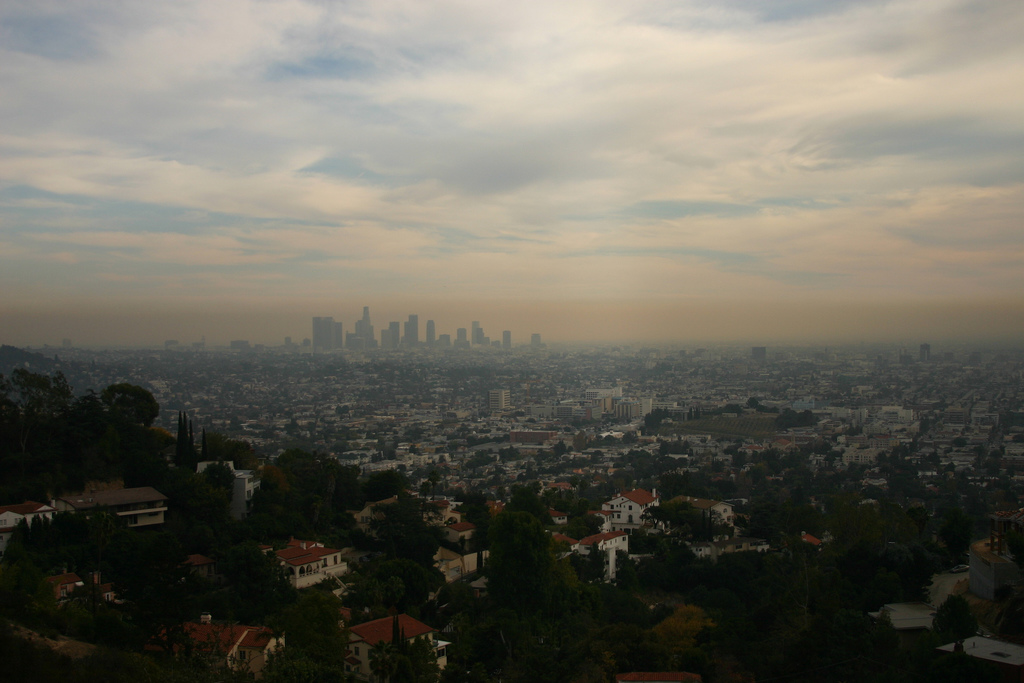Some of the largest automakers in the U.S. have banded together with California—to set an example for the EPA and its long-stalled emissions and fuel economy revamp.
The agreement between Ford, Honda, Volkswagen, and BMW's U.S. division would raise fuel-economy standards by about 3.7 percent a year through 2026 to a final target of about 50 mpg. Current standards call for a 5 percent annual increase through 2025, reaching a final target of about 51 mpg.
The agreement comes as talks have broken down between California and federal officials over the EPA's plans to freeze standards at about 37 mpg through 2026 and to revoke California's longstanding right to set its own tighter emissions standards. Since a 2007 Supreme Court ruling that carbon-dioxide is a pollutant because it leads to global warming, fuel-economy and emissions standards have been directly linked, because the only way to reduce CO2 is to burn less gas.
In releasing the fuel-economy freeze, known as the Safer Fuel-Efficient Vehicles Rule, the Trump administration said the new standards would make cars more affordable and allow more consumers to buy new cars with modern safety equipment, rather than holding onto older cars.
Automakers, along with 23 states have opposed the Trump administration's plans to freeze increases in fuel economy standards. California has launched a lawsuit with more than 16 other states against the EPA over its proposal.

Smog over Los Angeles, courtesy Flickr user steven-buss
Automakers have called for more modest increases than the current standards require and for more flexibility in meeting them, for example by trading emissions credits among models and between automakers and carrying them over from year to year. The four automakers say the new agreement with California gives them that additional flexibility.
In setting their own agreement with California, the automakers forged a template for other automakers and the EPA to follow and gives the California Air Resources Board a leg up in future negotiations with the EPA.
In a statement announcing the deal, California Governor Gavin Newsom said, "Few issues are more pressing than climate change, a global threat that endangers our lives and livelihoods....I now call on the rest of the auto industry to join us, and for the Trump administration to adopt this pragmatic compromise instead of pursuing its regressive rule change. It's the right thing for our economy, our people, and our planet."

California Air Resources Board chair Mary Nichols (via Twitter)
California Air Resources Board chairwoman Mary Nichols said the "agreement represents a feasible and acceptable path to accomplishing the goals of California and the auto industry. If the White House does not agree, we will move forward with our current standards but work with individual carmakers to implement these principles....If the current federal vehicle standards proposal is finalized, we will continue to enforce our regulations and pursue legal challenges to the federal rule."
NHTSA, which has federal authority over fuel economy standards and has had to work with the EPA to coordinate them with CO2 emissions standards, issued a statement saying, "NHTSA and EPA continue to work together toward the final SAFE Vehicles Rule, which will establish maximum feasible standards to which all vehicle manufacturers must comply. The proposal contained no language that would prevent any auto manufacturer from designing and building next-generation highly fuel-efficient vehicles."
After encountering opposition to its original proposal from automakers and states, the EPA has delayed finalizing its new proposal until at least after Labor Day.












